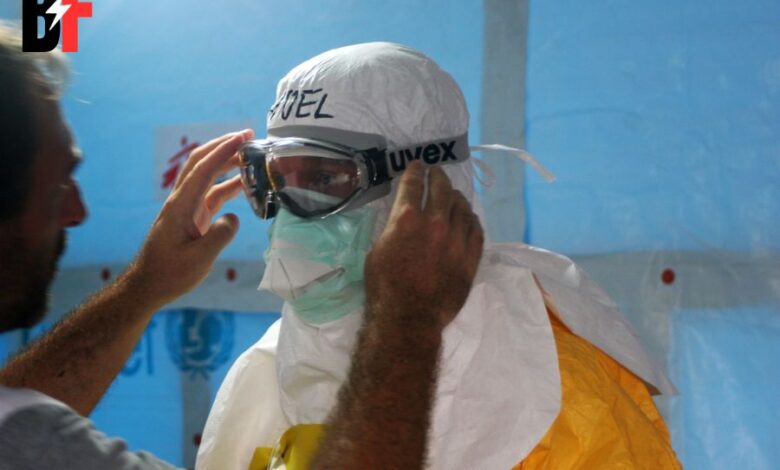How to Prepare for Survival

Preparing for survival in various situations, whether natural disasters, wilderness adventures, or other emergencies, requires careful planning and a proactive mindset. Be sure to consider what survival situation may be more imminent when determining how to pack and what to keep on hand in case you need it.
Assess Your Risks
Start by identifying potential risks in your environment, such as natural disasters (hurricanes, earthquakes, floods), personal threats (muggings, accidents), or outdoor adventures (hiking, camping). Understanding the specific dangers you may encounter is crucial. This can help you determine what personal protective equipment you need or how many supplies to purchase.
Learn Survival Skills
Acquire fundamental survival skills such as building a shelter, purifying water, starting a fire, administering basic first aid, navigation, and signaling for help. Practice these skills regularly to build confidence.
Stay Informed
Stay updated on current events, weather forecasts, and local emergency alerts. Knowing what’s happening in your area can help you make informed decisions in critical situations.
Develop a Communication Plan
Establish communication protocols with your family, friends, or travel companions. Share your whereabouts and emergency plans, and decide on a designated meeting point or contact person.
Create an Emergency Plan
Develop a comprehensive emergency plan for different scenarios. Include escape routes, rendezvous points, and contingency plans. Ensure everyone in your household or group knows their roles and responsibilities.
Stockpile Essentials
Accumulate necessary supplies such as food, water, medications, and toiletries to sustain you and your family for an extended period during emergencies. Regularly rotate and replace perishable items.
Invest in Protective Gear
Depending on your environment, invest in protective gear such as sturdy footwear, appropriate clothing, helmets, life jackets, and high-visibility vests to enhance safety.
Learn Navigation Skills
Familiarize yourself with map reading and compass use. GPS devices can be helpful but not foolproof, so traditional navigation skills are vital.
Cultivate a Survival Mindset
Mental resilience is as important as physical preparedness. Stay calm, assess situations rationally, and adapt to changing circumstances. Positive thinking and mental strength are assets during survival challenges.
Practice Situational Awareness
Pay attention to your surroundings, be aware of potential threats, and trust your instincts. Avoid risky situations when possible and take proactive measures to reduce exposure to dangers.
Secure Your Home
Fortify your home against potential threats. Install smoke detectors, fire extinguishers, and security systems. Reinforce doors and windows if needed. Have a plan for protecting your property during disasters.
Learn Basic Self-Defense
Basic self-defense skills can be invaluable in personal safety. Consider taking self-defense classes to enhance your ability to protect yourself if confronted with a threat.
Seek Training and Certification
Enroll in relevant courses or certification programs such as wilderness first aid, CPR, or disaster preparedness. Knowledge and skills gained from these programs can be lifesaving.
Legal and Financial Documents
Keep copies of important legal and financial documents (identification, insurance policies, wills, deeds) in a secure location that is easily accessible in case of evacuation or emergencies.
Choose the Right Survival Gear
Selecting the right survival gear is essential for being prepared in emergency situations.
- Assess Your Needs: Identify the specific situations and environments you’ll encounter. Consider factors like climate, geography, season, and the outing duration. Your survival gear requirements will vary accordingly.
- Prioritize Essentials: Focus on acquiring essential survival items first. These typically include shelter, water, food, fire-starting tools, first-aid supplies, a flashlight, a multi-tool, navigation equipment, and signaling devices.
- Quality Matters: Invest in high-quality gear that is durable and dependable. Quality gear is more likely to withstand harsh conditions and provide long-lasting performance. It’s an investment in your safety.
- Weight and Size Considerations: Consider weight and size when selecting gear for outdoor adventures. A lightweight, compact kit is ideal for backpacking or in situations where you need to carry everything independently.
- Multi-Functionality: Look for gear that serves multiple purposes. Multi-functional items can save space and weight in your survival kit. For example, a multi-tool can include various tools, reducing the need for individual items.
- Reliability and Reputation: Research brands and products with a reputation for reliability in survival situations. Reading product reviews and seeking recommendations from experienced outdoors enthusiasts can help you make informed choices.
- Consider Redundancy: Redundancy can be critical for essential items. Include backup options for required gear, especially if it’s small, easily lost, or necessary for safety.
- Water Purification: Ensuring a clean water supply is paramount. Invest in a reliable water purification system, such as water filters, chemical water treatment, or portable UV purifiers. These can help make natural water sources safe to drink.
- Fire-Starting Tools: Fire can provide warmth, purify water, and signal for help. Carry multiple means of starting a fire, such as waterproof matches, a fire starter, a lighter, or fire-starter rods.
- Shelter: Include suitable shelter options in your gear. Depending on your circumstances, this could be a lightweight tent, an emergency bivvy, a tarp, or a mylar emergency blanket.
- Food: Pack high-energy, non-perishable food items like energy bars, dried fruits, and nuts. Consider the duration of your outing and plan accordingly.
- Clothing: Dress appropriately for the environment. Layering is critical for regulating body temperature. Include moisture-wicking base layers, insulating layers, and waterproof outer layers.
- Communication Devices: Depending on your needs, carry communication devices such as a satellite phone, a two-way radio, or a signaling whistle. Ensure these are in good working order.
- Knife or Multi-Tool: A quality knife or multi-tool is invaluable for various tasks, from cutting cordage to food preparation.
- Light Sources: Include multiple light sources like a flashlight, headlamp, and spare batteries. LED lights are energy-efficient and have long battery life.
- Cordage and Repair Tools: Carry durable cordage (paracord) and repair tools like duct tape or gear repair patches to fix equipment and a makeshift shelter.
- Personal Hygiene and Sanitation: Don’t overlook personal hygiene items like wet wipes, hand sanitizer, and portable toilet or waste disposal bags.
- Training and Knowledge: Acquire the knowledge and skills to use your survival gear effectively. Enroll in courses on wilderness survival, first aid, and outdoor skills.
- Customize for Your Situation: Tailor your gear to your specific needs and the unique challenges of your planned adventure or potential emergency. Don’t overpack, but be prepared for the expected and the unexpected.
How to Rotate Survival Supplies

Rotating your survival supplies is essential to ensure everything in your emergency kit remains functional and safe.
Set a Schedule: Establish a routine for checking and rotating supplies. Depending on the items and storage conditions, this could be every three months, every six months, or annually.
Organize Your Supplies: Start by organizing your emergency supplies. Group similar items together, and create an inventory list detailing the contents of your survival kit. Having a clear understanding of what you have will help you track expiration dates and identify items that need replacement.
Check Expiration Dates: Go through all perishable items in your kit, including food, medications, and batteries. Check expiration dates and remove any items that have expired. Dispose of expired food safely and replace it with fresh supplies. If medications have expired, replace them with new ones.
Evaluate Water Supplies: If you’ve stored water, examine the containers for leaks, damage, or signs of contamination. Replace any compromised containers. Rotating your stored water every 6-12 months is a good practice to maintain freshness and prevent algae growth. Consider using water preservatives or cleaners to extend the shelf life.
Review Batteries and Electronics: Test batteries in flashlights, radios, or other electronic devices to ensure they are still functional. Replace weak or expired batteries with fresh ones. Consider using rechargeable batteries and regularly recharge them to maintain readiness.
Inspect Fire-Starting Tools: Check fire-starting tools such as matches, lighters, and fire starter rods for functionality. Ensure they are stored in waterproof containers to prevent moisture damage. Replace or replenish these items as needed.
Reevaluate Food Supplies: If you’ve stored canned or packaged food, check for bulging cans, damaged packaging, or signs of spoilage. Rotate through your food supplies by consuming and replacing items regularly to maintain freshness.
Maintain First-Aid Kit: Examine the contents of your first-aid kit. Check for expired medications, damaged supplies, or items that need replenishing. Ensure that the equipment is well-organized and readily accessible.
Check Clothing and Gear: Review the condition of clothing, footwear, and outdoor gear stored in your kit. Inspect for any wear, mold, or deterioration. Replace or repair items as necessary. Don’t forget to check the fit of clothing for growing children.
Refresh Documentation: Update essential documents such as identification, insurance policies, medical records, and emergency contact information. Keep these documents in a waterproof, portable container within your kit.
Reassess Your Kit’s Suitability: Regularly review your emergency plan and assess whether your kit suits your current needs and circumstances. Adjust the contents or add specific items as necessary.
Educate and Practice: Ensure that everyone in your household or group is familiar with the survival kit’s contents and knows how to use them. Regularly practice survival skills and emergency procedures to stay prepared.
Maintain Communication: If you have communication devices like two-way radios or satellite phones, test them periodically to confirm their functionality. Replace batteries or equipment as needed.
Remember that survival preparedness is an ongoing process. Regularly review and update your plans, supplies, and skills to ensure that you and your loved ones are well-prepared for any situation.
You Must Read: Exploring the Morry Rubin Gallery




